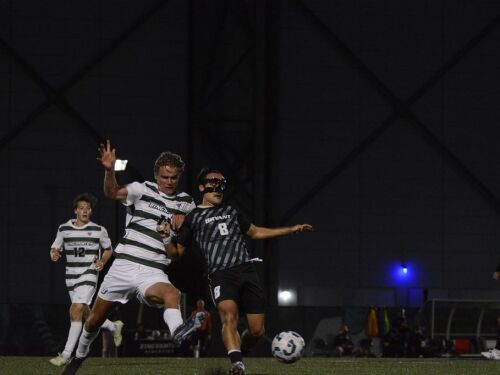Getting divorced is a common and unpleasant experience for many people, but new research shows a European songbird has its own version of heading to splitsville.
The new study reveals that some avian couples appear to call it quits at the end of their breeding season. The divorcees appear to go their separate ways while other couples stick together over the winter months so they can breed together again in the spring.
While the findings may be unsurprising to anyone who’s been through a breakup, it does show that socialization matters for more than just humans.
“I think more and more we are really understanding the extent to which social behavior influences animals’ lives,” says Adelaide Abraham, a PhD student at the University of Oxford and first author of the study. “It’s hugely, hugely important.”
Bird Breaks
The type of bird Abraham studied is known as the Great Tit, and it’s found throughout Europe.
“They’re a sort of small songbird, they’re a bit yellow, they’ve got a nice handsome black stripe on the front,” Abraham says.
In the spring, the little birds couple up to make babies. The male feeds his female partner as she incubates the eggs, and once the chicks are hatched, both of the parents help feed the chicks caterpillars and other insects.
When the babies fly away in summer, the couple’s duties are done. But what happens then? To find out, Abraham and her colleagues used little radio tags to track individual birds in the woods near Oxford. The tags would ping when the birds visited feeders set up by the researchers throughout the woods.
As summer turned into fall, they discovered that many pairs continued to hang at bird feeders together. But others did not. Some couples seemed to start drifting apart. The researchers described the pairs as “divorcing” in a paper published today in the journal Proceedings of the Royal Society B: Biological Sciences.
“Those divorcing birds, they, from the start, are already not associating as much [at the feeders] as the faithful birds,” Abraham says. “That only increases as the winter goes on.”
Most humans can relate, Abraham says. “Yeah we’ve gotten that a lot, people are like, ‘Oh we really could have predicted that.’”
But scientists say it’s not a given that the birds would behave this way.
“The other way this study could have gone is that there’s no association with who they’re hanging out with during the non-breeding season,” says Sarah Khalil, a postdoctoral associate at the Cornell Lab of Ornithology.
The entire flock might just randomly chill together until it’s time to pair off in the spring. Or it could be that exes would continue to cooperate over winter and then quickly find a mate as the weather started to warm.
Instead, it seems like individuals are ditching their exes early and building new relationships over the winter months.
Now Abraham does want to be clear: These birds aren’t really getting divorced. They’re not serving each other with papers or appearing in tiny courtrooms high in the trees.
Still, she says the work shows that bird drama is real: “There is actually a lot more going on in those flocks of birds out your window than you think there is.”





